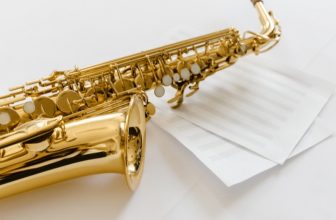Irish Bagpipes vs Scottish Bagpipes
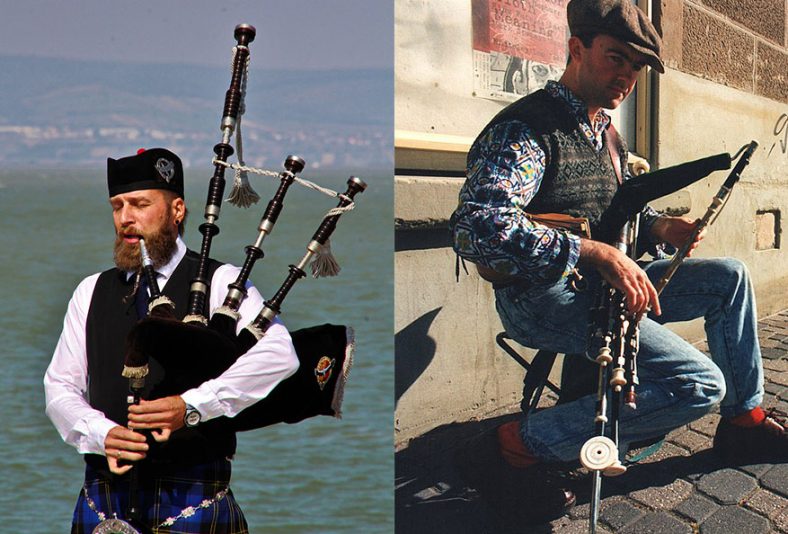
Even though they are similar instruments and offer similar sounds, Irish and Scottish bagpipes aren’t the same at all. They differ in several key features—the number of octaves they can range in, the way you play them, and the number of scales you can play them with.
Scottish bagpipes are played standing up by blowing into a mouthpiece. Irish bagpipes are played sitting down and are blown from bellows underneath the player’s dominant arm. Irish bagpipes are called Uilleann pipes (pronounced ILL-UN).
Both Scottish and Irish native instruments come from the same Celtic Gaelic origin, so it’s no surprise that they are similar. This is also the case with their bagpipes. Let’s compare them and see their differences.
Contents
Differences in Sound
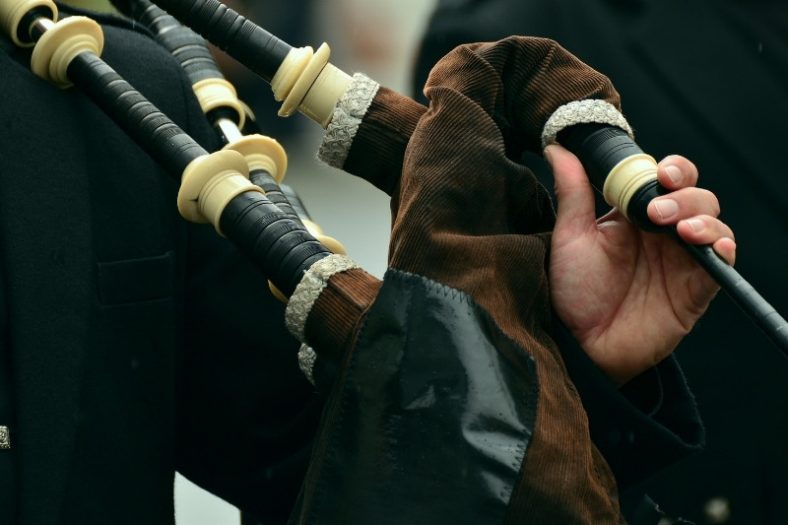
First of all, the main difference between the two comes from the number of octaves and notes you can play on them. This comes from the slight differences in the design of the instrument itself. Scottish bagpipes have only one scale—the Mixolydian scale, as well as only one octave as a result of that. Irish bagpipes, on the other hand, have multiple scales and usually two octaves.
There is also a big difference in the sound of these instruments. Because of the different way you blow the air into the reeds from these instruments, Scottish bagpipes have a much louder and more percussive sound, while Irish bagpipes produce a much softer and warmer sound.
Differences in Playing Style
Both of the instruments are played in the same way. They are wooden reed instruments. The main difference between the two is the way the players get the wind to the instrument to get the sound from it.
Scottish bagpipes can be hard on the lungs of the player. This means that you have to have strong lungs to be able to play the instrument constantly. This instrument is mostly played standing or marching in a marching band.
Irish bagpipes, on the other hand, are inflated by the bellow, which is then contracted by the hand of the player to create the wind needed for the instrument to work. They are usually played with the player sitting, as they need to get a better hold of the instrument to be able to control the bellow.
Because of the more octaves that can be played on the instrument, Irish bagpipes play a larger variety of chords and more elaborate melodies than their Scottish counterpart.
Differences in Volume
Scottish bagpipes are much louder. Because of the way their chanter is built from the inside, they have a more intense and percussive sound.
Irish bagpipes have an internal bore shape that is cylindrical. This gives the Irish bagpipes a much softer and quieter sound.
The Irish Bagpipe (Uilleann Pipe)
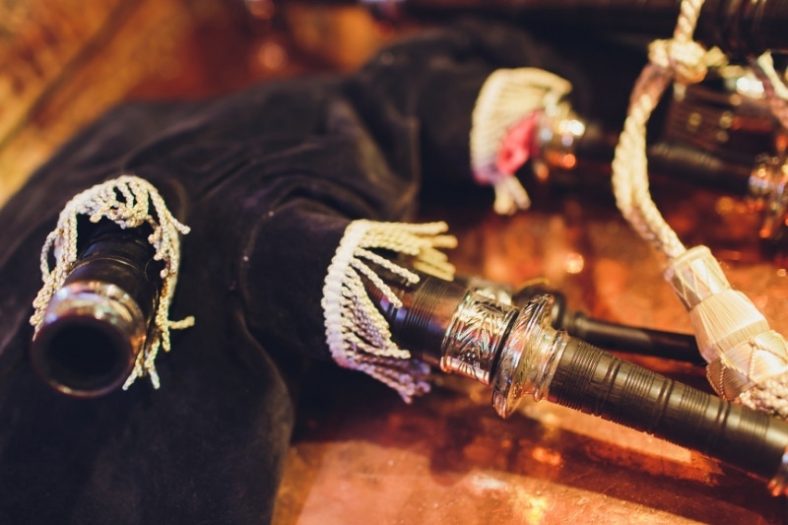
Irish bagpipes are a bit younger than their Scottish counterparts. Because of this, they are a bit more complex in their build and have several key differences.
As we’ve already mentioned, the wind for the bagpipes comes from the bellow and not from the player’s mouth. The bellow is held beneath the player’s dominant arm and pushed with an elbow to get the air flowing.
The chanters of the Uilleann Pipe are double reed. They are meant to be sitting on the player’s lap. This, together with the bellow part, means that this bagpipe is intended to be played while sitting and not standing or marching, as is the case with the Scottish bagpipes.
The range of the chanters is wider—they can fit two octaves instead of one. Pipe chanters can also be shut down, as well as drones, so you can have much more control over the sounds that you play.
The main difference, though, is the regulators. Regulators are the unique feature of the Irish bagpipes. They come in a set of three and look a lot like chanters, with holes and reeds, and they sit on the player’s lap next to chanters.
This means that you can play chords and more elaborate melodies on Irish bagpipes than you can on the Scottish ones. Also, you should note that Irish bagpipes tend to be much more expensive and require more time to be constructed because of these differences.
The Scottish Bagpipe
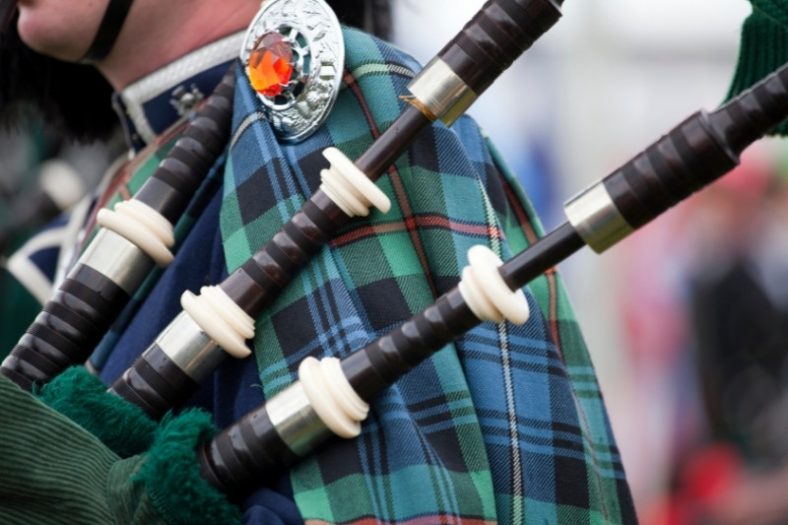
The Scottish bagpipe is the original instrument, and the one most people think of when they think of bagpipes. They are big, loud, and have a limited scale to play on. As we’ve already mentioned, the main difference is the way you play them—the piper has to blow into the bagpipe.
The traditional Scottish bagpipe consists of the blowpipe, the bag, the chanter, and the drones. The bag is filled with air by the blowpipe and has to be constantly refilled as you play, making it a reservoir of air for the instrument. The bag on both instruments is usually made out of animal skin. Still, these days there are many more synthetic materials to reduce the cost and make it easier to manufacture.
Scottish bagpipes have only one chanter and three drones. The chanter has holes in it and is played like a flute, with a player fingering to get the right notes. The drones, different from the Irish bagpipes, also have reeds in them, but they have no holes, and you can’t control them in any way. They are meant to produce that iconic buzz in the background and consist of two tenor and one bass drone, which goes off whenever you play the bagpipes.
History of the Irish and Scottish Bagpipes
Even though people nowadays think of Scotland when they hear the bagpipes, the instrument itself originated from the ancient Middle East and is played all across Europe and Asia in traditional folk music.
The Scottish learned about the instruments from the Romans and started playing them from that time on. There are mentions of bagpipes as we now know them from as early as the 14th century, but they took today’s form in the 16th century Highlands.
They became a well-known instrument through their use in the army and military bands, as Scottish regiments always had bagpipers to represent them, and they stood out with the noise they were making.
Bagpipes spread across the United Kingdom, and many versions were made. Irish bagpipes as we know them now came to be around the beginning of the 19th century as an evolved type that was easier to play and more comfortable for the listener’s ear.
Summary
There are many differences between the Irish and Scottish bagpipes. The chanters on Irish bagpipes are double reed, while the Scottish ones are single reed. The range of the chanter is larger on Irish bagpipes as well. Both types of pipes have a drone part for bass notes, but only the Scottish one has them for a set of three, which are controlled by the piper. Irish bagpipes also have regulators, which give them a larger range of notes than Scottish ones can produce.
While similar to the untrained eye, Irish bagpipes are more complicated to produce and play. They are much more expensive, which makes the Scottish ones be a better option for beginners or less experienced players.
We hope this clears up some of the confusion that was out there about these instruments. While very different, both types of bagpipes still produce that characteristic sound we all know and love!
Featured Image (right) by: Tony 1212, CC BY-SA 4.0, via Wikimedia Commons



